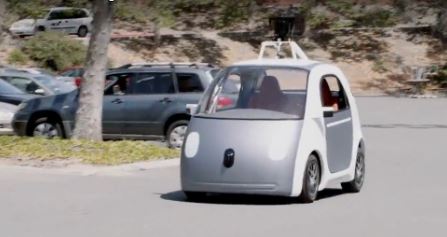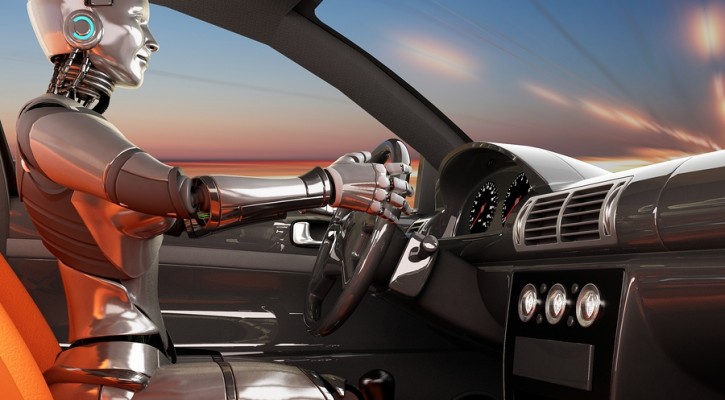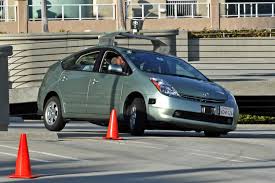Tag Archive: Driverless cars

Driverless Cars: Myths and Reality
September 22, 2014
Driverless cars are coming closer to reality every day but they still have a long way to go. It’s going to be some time before governments and auto manufacturers can all agree on a common system that will allow driverless cars to communicate with each other, and the roadway.
Driverless cars could lead to a future with fewer traffic jams, lower commute times, more fuel efficiency, and, most important of all, safer driving. However, a driverless car that’s one hundred percent driverless and one hundred percent safe is probably something that may never be achieved.
Even the best of the driverless cars being tested on the road today can’t operate in adverse weather conditions such as heavy rain and snow. Could a computer algorithm accurately predict the actions of a drunk pedestrian trying to cross the road?
Anyone who’s had a cellphone call dropped due to a momentary loss of signal can imagine what the challenges for a driverless car could be. A pack of different types and sizes of driverless vehicles traveling at interstate speeds can’t afford to drive through a wireless signal blind spot.
Who is ultimately responsible if a crash should occur? Will the blame for human error in a crash pass from the driver to the computer programmer who wrote the car’s operating code? Who gets sued in a traffic crash; the owner of a driverless vehicle who assumed it was safe to travel under the influence or the cell phone company whose signal was lost?
To better understand the promise and fears of driverless cars, read: 8 truths and myths of driverless cars

Crash-free Car Plans Announced By Automakers
September 11, 2014
Crash-free or almost crash-free cars may become a reality sooner than we thought. In previous articles, we discussed the shift by automotive engineers from designing cars to protect the occupants in a crash to avoiding the crash altogether through the use of collision-avoidance technology. Recently, two automakers announced plans to build crash-resistant and almost driver-free cars within the next couple of years. It seems that, while the Google car has been getting all the press, engineers from the mainstream auto manufacturers have been developing crash-free technology of their own.
Toyota announced last week that they will include collision-avoidance technology, currently only available in its Lexus luxury line, in the entire US model lineup beginning in 2017. The Lexus line currently has an active “Pre-Collision System.” If the onboard radar and cameras detect an imminent frontal crash, the system will warn the driver, boost brake pressure, and tighten up the seat belts. If the driver fails to heed the warning, the system will apply the brakes to avoid or at least reduce the crash forces of an impact. This differs from “passive” collision-avoidance systems that only warn the driver but otherwise, take no action to avoid the crash.
General Motors has taken it a step further in an announcement that their Cadillac line will contain technology that allows driving without hands on the steering wheel or feet on the pedals. GM’s technology, known as “Super Cruise,” can control the vehicle’s speed, steering, and braking at speeds up to 70 mph. The technology is designed to work both on the open road and in stop-and-go traffic. GM also announced that they will be the first auto manufacturer to equip their vehicles with vehicle-to-vehicle (V2V) technology within two years.
It’s not just a desire to protect the automotive public that’s driving these innovations, there are ulterior motives as well. Some automotive industry analysts feel that GM’s announcement is an effort to restore public trust after the recall scandal that they experienced earlier this year. Another reason for going forward with this type of technology is that the Insurance Institute for Highway Safety (IIHS), announced that, beginning in 2015, in order to get a “Top Safety Pick +” rating, vehicles will have to be equipped with auto-braking systems.
These technological innovations aren’t without their challenges. Last month, cyber-security experts raised the alarm over the ability of hackers to gain control of a vehicle’s computer system and possibly cause a crash. Earlier this week, David Friedman, acting administrator of the National Highway Traffic Safety Administration (NHTSA) announced that he sent a letter to the CEOs of every automaker asking that they come up with an automotive cyber-security plan by the end of the year.
Aside from the life-saving benefits of the crash-free systems, the technology will offer other benefits as well. Truly driverless cars will save time and money for consumers in several ways. Once all vehicles are equipped with V2V and collision avoidance technology, experts feel that, by maintaining a safe following distance and regulating speed, traffic will move much more smoothly and traffic jams could become a thing of the past. By not having to idle in stop-and-go traffic, miles per gallon should increase and braking systems will experience less wear. With crash-free technology, insurance rates should go down significantly, although it raises the question of who will be held to blame if a crash should occur, the driver or the manufacturer’s computer programmer.

California DMV Sets Rules For Driverless Cars
May 29, 2014
The California DMV has laid out a set of rules for vehicle manufacturers seeking to test driverless cars on California highways. Drivers must be in the seat, ready to take over and manufacturers must post a $5 million bond. Read more: DMV Lays Out Rules Governing Self-Driving Car Tests

Google Unveils Its Own Car: There’s No Steering Wheel Or Brake
May 28, 2014
Google has been at the forefront in driverless car technology using specially adapted Toyotas to test its technology. They recently unveiled their own design for a driverless car that has no steering wheel or brake pedal, just two buttons. Read more: Google’s new driverless car has no brakes or steering wheel
Photo courtesy of Google
